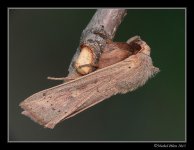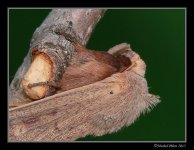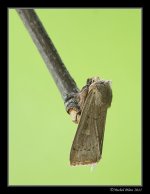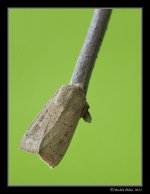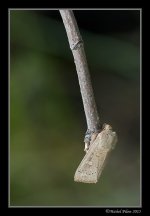Hi
I thought I would ask an expert.
He has replied, with in-depth comments:
"The moth is definitely a species of the Leucania pseudargyria/inermis/ursula species complex.
Louis Handfield’s book on the “Papillons du Quebec” (1998, completely revised in 2011) lists all three species for Quebec, but a closer examination of specimens has resulted in all records of Leucania ursula being re-identified as Leucania inermina or pseudergyria.
Leucania pseudargyria is the largest and most common and always has a reddish flush to the forewing, especially round the reniform and orbicular spots, and the male foretibia has a massive tuft of dark blackish-red hair-like scales. It is widespread throughout eastern Canada southwards into the US.
Leucanua inermis is a little smaller, has a faint trace of reddish scaling, and there is no tuft on the male foretibia. It occurs in Canada from southern Quebec and Ontario southward into the US.
Leucania ursula is the smallest species and appears more gray than the other two species, but like pseudargyria, it has a massive foretibial tuft. It is more of a Carolinian species extending into Canada only in southern Ontario where southern trees like Tulip tree (Liriodendron), sycamore, and sassafras grow. It has not been found in Quebec.
So, the image seems to be a pale specimen, suggesting it might be Leucania ursula, and there is what might be the edge of a tuft showing on the right side of the thorax (at the base of the broken twig). The safest answer would be Leucania inermis, but the possibility that this could be the first record of Leucania ursula in Quebec can’t be ruled out.
It would be great if it was subsequently collected".
Some interesting comments.
Martin




